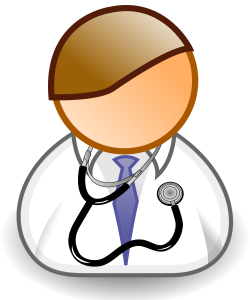This section addresses the functional scope of clinical decision support. CDS may be represented in a variety of formats or tools which depend on the clinical situation or environment. These tools are often referred to as CDS formats, types, or interventions and can be deployed to a wide variety of systems and platforms, such as mobile devices.
Within these functional areas, CDS can be further subdivided into tools which are prompted by the tasks a clinician performs such as patient charting or diagnosis, and functions that are triggered by external events such as the expiration of a period of time.1 Some of the more common CDS functions are described briefly in the table below. Use of these functions may be appropriate in a variety of clinical domains or use cases, some of which are discussed in the Clinical Areas section.
Table 1.2-1: CDS Functions
CDS Function | Description | |
|---|---|---|
Alerts or Reminders | One of the more common types of decision support is computerized alerts (or reminders). These are triggered by rules and designed to interrupt clinicians or patients at the appropriate time. These alerts are also referred to as “best practice advisories” and can be implemented as pop-ups on a users screen or in monitoring tools such as a dashboard. Alerts can also be used to trigger other communication mechanisms such as paging or faxing. Examples of alerts include drug to drug interactions, or drug allergy warnings triggered when medications are prescribed. | |
Clinical Guidelines and Reference Information | These CDS functions are often implemented as links to external references which are published by third party, knowledge experts. Guidelines may be represented in a standardized format to facilitate interoperability - for example, the HL7 Infobutton2 . References can be based on relevant, context-dependent data captured in a patient health record or another electronic artifact such as an order or clinical document. | |
Diagnostic Support Tools | These tools use a combination of patient data, context-based suggestions and clinical knowledge links to aid the clinician in making a diagnosis. An example would be a tool that prompts a physician for additional findings and suggests additional tests or procedures to help differentiate the diagnosis. | |
Automatically Triggered Smart Forms | These documentation tools, which include reports and summaries, are aimed at high quality records, the reduction of errors, and more complete information. These tools can be triggered when a specific patient condition is detected or when a finding is deemed reportable to a jurisdictional health body. These can be represented as focused patient data reports or summaries and are often utilized at the point of care (POC) in real time. | |
Conditional Order Sets and Pathway Support | These are typically designed for complex ordering scenarios. They may be comprised of a proposed set of orders or a treatment regimen which is based on an explicit situation or medical condition. These interventions can ensure compliance with established protocols. They can also be utilized to guide clinicians though complex care pathways. | |
Ref |
Notes |
|---|---|
| 1 | http://www.himss.org/library/clinical-decision-support/issues |
| 2 | http://www.hl7.org/implement/standards/product_brief.cfm?product_id=208 |
Feedback




